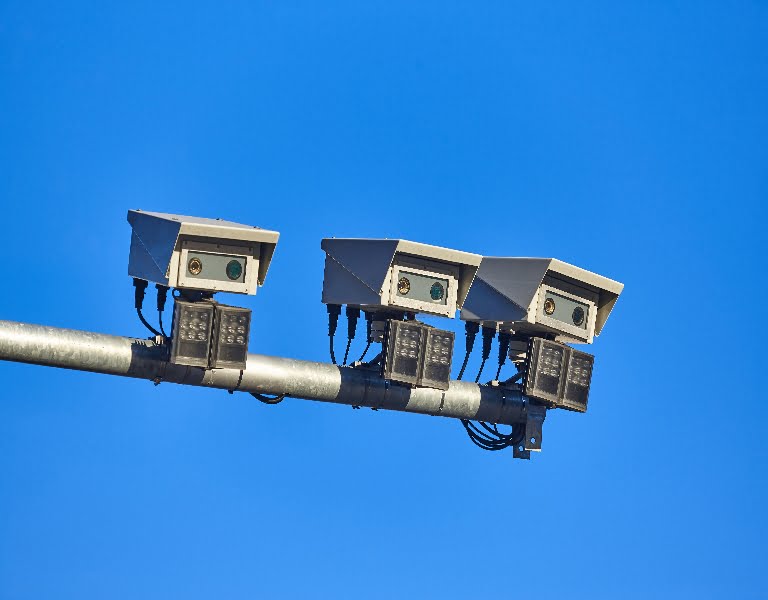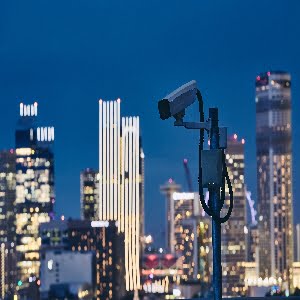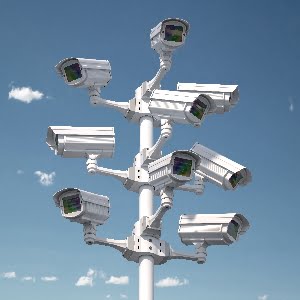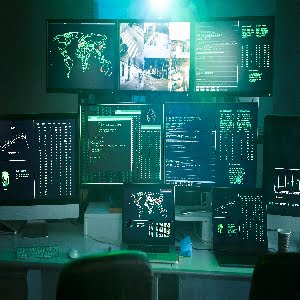Smart Cities
Smart technology is thus reshaping how we live, work, and interact with our environments, driving innovations that significantly improve convenience, efficiency, and sustainability.
Secure and Smart Technology
A smart city combines advanced technology and data analytics to enhance the quality of life, efficiency of urban operation and services, and competitiveness, while ensuring security and sustainability. Here are key points that contribute to making a city both smart and secure:
- High tech cameras
- Itelligent data processing
- Dedicated team of professionals

Singapore consistently ranks as one of the smartest cities globally. Its “Smart Nation” initiative integrates IoT, AI, and big data to improve transportation, healthcare, and citizen services. The city uses sensors and cameras to monitor traffic flow, pollution levels, and even crowd densities, optimizing everything from bus routes to waste management.
Tokyo, known for its technological prowess, focuses on sustainability and resilience. The city’s sophisticated public transportation systems, disaster response strategies, and energy-efficient buildings set a high standard for smart urban living. Tokyo’s commitment to digital transformation and citizen security is evident in its preparations for natural and man-made challenges.
Amsterdam has long been at the forefront of smart city initiatives. With projects like Smart Amsterdam, the city uses data analytics to enhance public services, reduce energy consumption, and improve traffic management. Amsterdam’s open data policy encourages innovation and has led to apps and solutions that guide parking, energy use, and tourist flows.
New York City utilizes its vast technological resources to enhance urban operations and services. Initiatives like LinkNYC, which replaces payphones with Wi-Fi kiosks, and a robust open data platform, support community connectivity and transparency. NYC’s focus on integrating technology into everyday life is also evident in its smart waste management and water quality monitoring systems.
Barcelona has made significant strides in smart city development by implementing IoT solutions across urban services. The city’s integrated traffic and parking systems, along with smart lighting and bus networks, are part of a comprehensive plan to boost sustainability and reduce urban congestion.
These cities demonstrate how technology can be harnessed to make urban environments more livable, efficient, and sustainable. They are paving the way for future developments in smart city technologies, setting benchmarks for others to follow.
Our Best Solutions
Advanced Technology
Expert Engineers
Delivery on Time
What it takes to make the project
A smart city combines advanced technology and data analytics to enhance the quality of life, efficiency of urban operation and services, and competitiveness, while ensuring security and sustainability. Here are key points that contribute to making a city both smart and secure:
Smart Integration
Integrated Data Systems
Centralized platforms that gather and analyze data from various city departments and services allow for real-time decision-making and more efficient resource management.
Interconnected Infrastructure
Connectivity across transportation, energy, water systems, and other critical infrastructure, enabled by IoT technologies, ensures coordinated and streamlined city operations.
Efficient Technology Deployment
Advanced Sensors and IoT: Deployment of sensors and IoT devices across public utilities and services (like traffic lights, water supply systems, and public transport) to monitor and optimize operations.
Artificial Intelligence
AI algorithms analyze large volumes of data to forecast and respond to city needs, from traffic and transportation to public safety and environmental monitoring.
Security and Safety Enhancements
Cybersecurity Measures: Strong protection of digital networks and data against cyber threats, ensuring the privacy and security of citizen data and preventing disruptions to city operations.
Physical Security
Enhanced surveillance systems, smart lighting, and emergency response solutions integrated with AI to improve public safety and response times.
Sustainable Development
Energy Efficiency: Smart grids and smart energy solutions that optimize energy consumption and reduce waste, contributing to sustainability goals.
Environmental Monitoring
Systems to monitor air quality, water levels, and other environmental factors to protect the city’s environment and public health.
E-Government Services:
Digital platforms that facilitate more accessible and efficient government services and encourage citizen engagement through feedback and participatory governance models.
Legal and Regulatory Frameworks
Well-defined policies that support the deployment of smart technologies while protecting citizen rights and promoting equity.
Community and Living
Smart Housing: Development of smart residential areas equipped with technology to manage utilities and security, enhancing living conditions
Social Inclusion Programs:
Technology-driven solutions that foster inclusivity, making services accessible to all, including marginalized and disabled community members.
These elements, when integrated into a city’s planning and operations, not only make a city smarter by enhancing its functionality and efficiency but also secure by safeguarding its technology, infrastructure, and its citizens.




